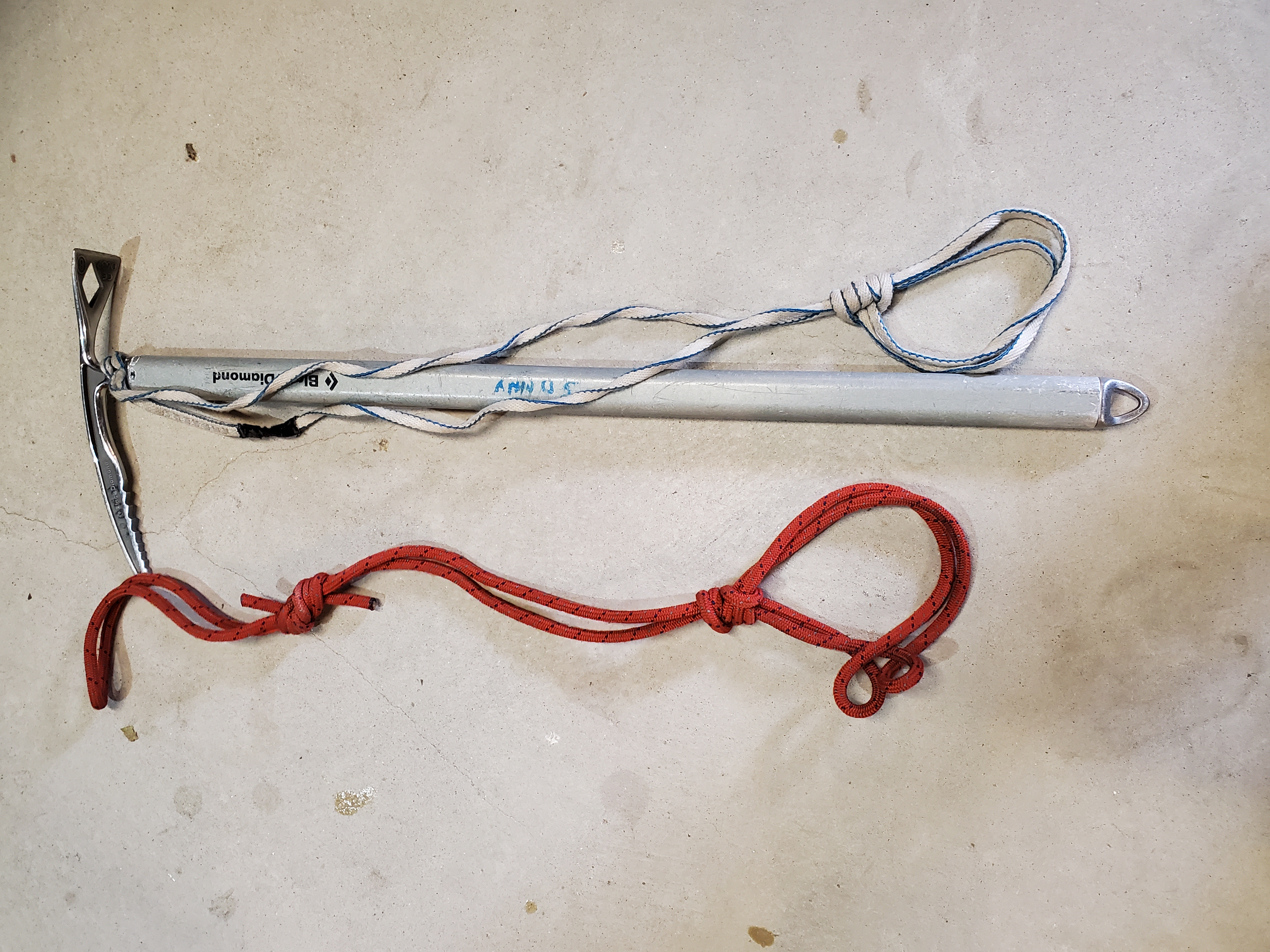Tuesday
Mar162021
Ice Axe Tether
 Tuesday, March 16, 2021 at 21:33
Tuesday, March 16, 2021 at 21:33  Sonny Lawrence
Sonny Lawrence
 The instructors for the Basic Mountaineering Course (BMC) have made a modification to the required gear list. The change has to do with the tether on the ice ax.
The instructors for the Basic Mountaineering Course (BMC) have made a modification to the required gear list. The change has to do with the tether on the ice ax.Ice axes may or may not come with a commercially made tether. Such tethers are geared toward recreational mountaineering use. They may have features that make them superior for general mountaineering. However, they lack one or two features that are quite useful for SAR. The mechanism for attachment may be very simple and not very strong. The tether itself may not be very strong. And the tether may not be easily adjustable.
For BMC, we teach that ice axes can be used to build snow anchors. They may be a deadman, positioned vertically or horizontally. They may be a critical initial piece of equipment for use in escaping the belay. Consequently we desire a tether that is easily but securely attached to the ice ax. It should only reach to the bottom of the ax. It should be rated for at least a one-person load. It should be usable in an anchor system. It should act as a shock absorber. And it should be easily adjustable in length. Purcell prussiks satisfy these functions. Hence from now on as a minimum, all ice ax tethers used in BMC will be made out of 6 mm or greater diameter cord tied as a Purcell prussik. Commercially sewn Purcell prussiks are acceptable.
A student may wish to consider a tether made out of Dyneema instead of nylon. Dyneema is stronger and does not absorb water (and hence won’t freeze in the snow the way nylon does). In the attached photo, the ice ax is equipped with a Mammut 8 mm thick, 60 cm long Contact sling tied as a Purcell prussik. It breaks at 22 kN. It is girth hitched to the ice ax. Next to it is a nylon cord tied as a Purcell prussik.
